5 October in the Chernihiv Historical Museum named after V.V. Тарновського відбулася музейна зустріч присвячена історії одного артефакту – румунського Часослова 1833 year.
This is a liturgical book, which contains the observance of the daily circle of divine services. It is printed in Romanian in Cyrillic. Published in the printing house of George Closius (м. Sibiu, Transylvania).
Records have been preserved in the book, which clarify that, how she ended up in Chernihiv Oblast. It was brought by soldier Gavrilo Baran from the Romanian front during the First World War, a resident of Olbyn village, Oster district, Chernihiv province, who made the following entry in it: “Эта книга найдена мною во время отступления под натиском неприятеля в Румынии по дороге от города Меджидия к городу Браила 1916 года октября девятого дня”.
The distance between these settlements is approx 170 km. But reduce the geographical scale to determine a more precise location, Gavril Baran's personal diary helped where the soldier found the book. The Chronicler was found among the villages of Satu Nou (which is near. Medzhidia) and the village of Bazarlu on the road among the things left by the refugees. He writes: «Мы выехали т.е вышли на дорогу при страшной темноте и небольшом дождике, we saw a terrible picture: retreating troops, refugee carts, infantry, artillery, Cossacks - everything mixed together... and when dawn, then my eyes saw even more terrible pictures. There were a lot of all kinds of property lying everywhere along the road., abandoned by refugees, like sewing machines, pillows, books, dishes and other things. And grain: wheat, corn, the whole ditch was filled with oats and other things.”.

Знайти на сучасній мапі населений пункт Базарлу не вдалось, але з тексту зрозуміло що він знаходиться на відстані нічного шляху солдатів від села Сату Ноу.
Щоденник дбайливо зберігається його нащадками в сімейному архіві. На зустріч до музею завітала правнучка Г. Барана пані Зоя Борисівна Сіліна, яка люб’язно надала рукопис для презентації учасникам зустрічі та розповіла про деякі віхи життя свого пращура.
Також на зустрічі був присутній через онлайн зв’язок праправнук Г. Барана – протоієрей Михаїл Гречило. He read the most interesting excerpts from his ancestor's diary, from which it became known, that Gavrilo Baran was a clerical clerk at the military bakery.
Our Romanian colleagues also joined the museum meeting. So, with a report on the history of the George Closius printing house (and by that time the Bart family) and its cultural and educational significance in Romania was presented by Ms. Oksana Stredije - head of the library of the Mures Region Museum. Вона також розповіла про екземпляр Часослову з цієї друкарні, which is stored in their library. The participants of the event were able to compare two museum books.
On the pages of the church calendar, which are at the end of the Chronicle from the collection of the Chernihiv Historical Museum named after. VV. Many records of Tarnovsky have been preserved, які стосуються дат народження чи смерті членів родини Баранів.
Some records report on the events of World War II: 1) "August 1942 28 day the German army entered Olbin and then Vitya was killed, may his memory be eternal.”. 2) «1943. 13 On September the Germans entered Olbin (crossed out) красноармейцы» та інші.
There is also a recording, which tells about the weather in spring 1942 year: «1942 года в марте месяце по старому стилю были морозы 1го 16⁰, 2the 22⁰, 3the 21⁰…»
Many entries have been preserved in the book in Romanian. Unfortunately, at this time they are not deciphered. However,, завдяки допомозі наших румунських колег вдалося встановити, that the book was bought in Bucharest in the middle of the 19th century.
The chronology is decorated with wonderful engravings, screensavers, initials and endings. Frame of the 19th century. The size of the book is 18x12 cm.
Старший науковий співробітник музею,
Candidate of Theology Miroslav May-Boroda
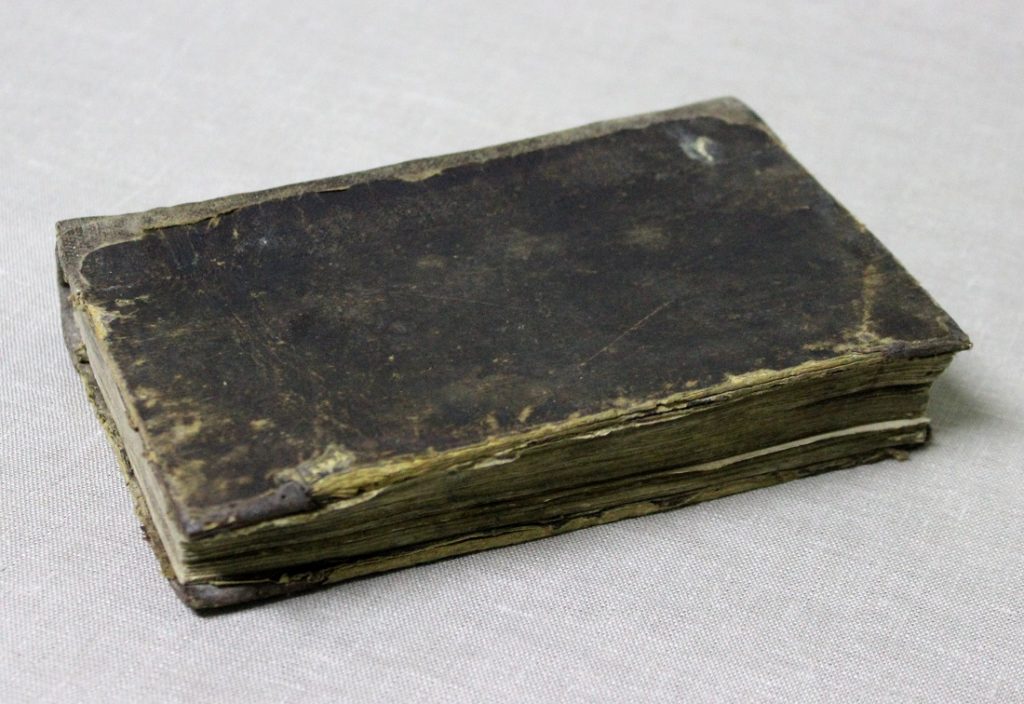








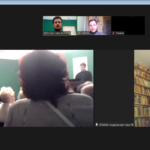
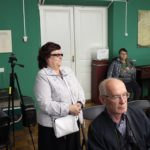


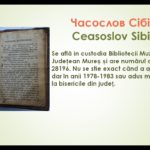
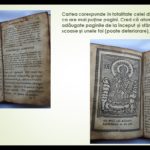
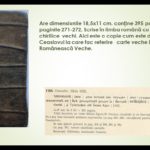



More Stories
Congregant of Metropolitan Peter Mohyla and Hetman Ivan Vyhovsky from the Baturyn Monastery
2022 рік: Headquarters documents of the RF Center troops
Unification of Chernihiv museums